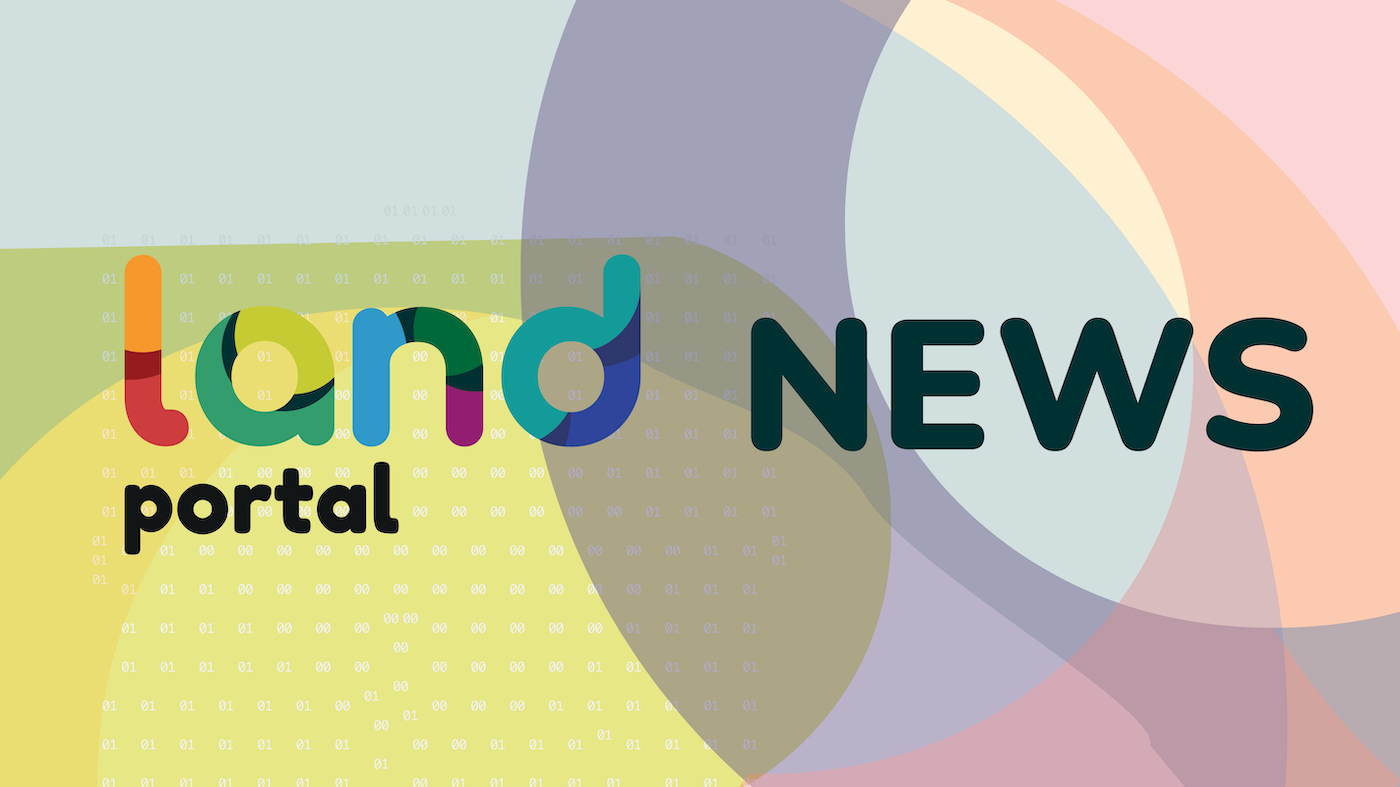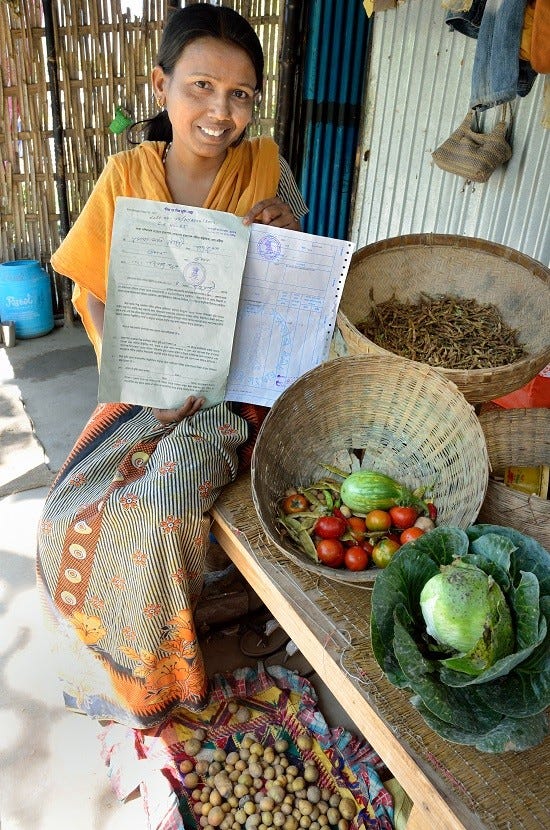

The following story is developed from remarks at TEDxJakarta 2019.
In India, a widow named Sonamoti lacks the resources to feed her only son because she was deprived her share of family land. She wishes for the means to grow food for him.
Villagers in Myanmar fear the loss of their homes and the destruction of the environment due to illegal logging, oil palm concessions, and other developments. They wish to protect the forests on which they depend.
A girl from Vietnam spends her entire childhood living through war, in which hundreds of thousands died and millions are displaced. She wishes for a better life.
These stories are about hardship, instability, and also insecure rights to land. But they’re also about dreams: how to realize dreams that are essential to meeting basic needs and fully developing human potential.
Securing the intangible
The role of land in meeting these dreams is hard to see. It is a question of scale and significance. In a small quantity, land is merely dirt. But on the broadest scale, it is the cradle of civilization, society, and religion, covering over 50 million square miles of our planet. It is the natural wealth of nations. Wars are fought on it and over it. Local and indigenous communities rely on it for their physical and cultural survival. Men, women, and families depend on it for their homes, livelihoods, and source of security.
Viewed in this light, land is a physical resource that is indispensable to people’s lives. It is essential to realizing many human rights, a fact recognized by the United Nations. Land brings tangible benefits to people by securing the intangible: land rights.
Land rights are the rules that define people’s relationship with land. These rules determine who can — or cannot — access, enjoy, control, and transfer a given piece of this vital physical resource to meet their basic needs and lessen the grip of poverty.
Unfortunately, for too many people — like Sonamoti, the villagers in Myanmar, or the girl in Vietnam — land is stubbornly out of reach. At least one billion people who suffer from poverty live in rural areas and lack secure rights to land. These men, women, and children live in uncertainty. This makes their home less stable, makes them uncertain about planting a crop to feed their family, and limits options for earning a basic livelihood. In addition, people are far less likely to make long-term investments on land they know they could lose tomorrow. Without secure land rights there is insecurity and also missed opportunities.
The potential of land rights to realize dreams
Land rights have the potential to transform insecurity. For the forest-dwelling villagers in Myanmar, it was a change to the law that transformed their relationship to the forest. When a new government in Myanmar granted land rights to the community, the villagers found themselves with new legal standing to enable their dreams of defending their forests against illegal logging and other destructive activities.
Ma Phyu lives in a community forest in Myanmar, where she maintains a nursery in which she grows native trees (pictured above). Today, people like Ma Phyu manage and protect hundreds of thousands of acres of forest in Myanmar’s Tanintharyi Region.

Today, hundreds of thousands of acres of forests in Myanmar’s Tanintharyi Region are under the protection and stewardship of local and indigenous communities, backed by a legal guarantee of their rights.
Land rights have also transformed some of the more egregious and widespread insecurities. I learned this lesson through my work with Landesa. Its founder, Roy Prosterman, an American law professor, first advocated for land rights in South Vietnam during the civil war. He saw deep rural inequality and poverty as drivers of the conflict. Roy championed the cause of land rights for these tenant farmers as a means to contribute to a big dream — a country with less conflict and poverty.
South Vietnam’s land reform program gave 1 million families secure rights to individual plots of land, leading to a 30% boost in rice production and an 80% drop in recruitment to guerilla forces. These reforms demonstrated the potential for land rights to make a positive difference, even in the most unpromising circumstances.
The results were so positive, in fact, that Vietnam’s post-war government expanded the land reform throughout the entire country.
Today, Vietnam is one of the top ten rice producers in the world and the second-largest coffee producer, sectors that support the livelihoods of around six million people. Only 3% of Vietnam’s people live in extreme poverty; this is a tremendous accomplishment considering that half lived in extreme poverty 20 years ago.
Focus on women’s land rights
In harnessing the potential impact of land rights, there is a particular need to secure land rights for women. There’s an important lesson to take from South Asia. In the 1990s, South Asia enjoyed high economic growth and poverty reduction, and yet malnutrition rates remained higher than in many countries in Sub-Saharan Africa. This so-called “South Asian enigma” puts in question the assumption that economic growth automatically improves the lives of people, especially women and children. Research by the International Food Policy Research Institute (IFPRI) found an important missing link: a factor contributing to high malnutrition rates was women’s low status as compared to men. This low status impaired women’s dignity and ability to assert themselves, and compromised their ability to direct family resources to their children, contributing to child malnutrition.
With secure land rights, Sonamoti was able to grow enough food to her family. She sold the surplus at market to help pay for her son’s school fees.

Remember Sonamoti, who was ashamed by her inability to feed her son? After receiving rights to a plot of land through a local government program, she planted a vegetable garden. She used the harvests to feed her son, and sold the surplus. She was able to save and to use those savings to support her son’s education.
This kind of outcome is supported by comparative research, which finds positive links between women’s land rights and women’s increased income and savings; children who are less likely to be severely underweight or sick; and women devoting more of the family budget to education.
These gains come from women’s increased control over family assets and their increased status and bargaining power within the household, helping women prioritize their dreams for a better life for their children.
While there has been strong progress in some countries, in more than half the world, millions of women still encounter barriers to their land rights in both law and practice. Often, women can only access land through a male relative — a husband, father, brother, or other family member. If that relationship changes — due to death, divorce, abandonment, or conflict — a woman’s rights to land can be lost. This may put women at greater risk of poverty, discrimination, coercion, and gender-based violence.
So, I raise three questions for policy makers around the world to consider if they want to meet the basic needs of their citizens through improved agrarian policies.
First, are all women equally and independently guaranteed rights to land under the law?
Second, are those rights for all women realized and protected in practice?
If not, what potential might your country be missing out on?
Call to Action
Whether you live in the Global North or the Global South, in a city or a rural area, all of us can help advance women’s land rights in three important ways.
First, have the conversation about why land rights are important to you and your country. Ask women about their dreams, and how land rights can help fulfill these dreams. Talk about women’s land rights with your families, government officials, and customary and religious leaders.
Second, take action. Learn whether your country’s laws guarantee equal opportunity for women and men to obtain land rights, and whether these rules are applied in practice. Support a local organization that promotes the cause of land rights and women’s empowerment.
Finally, imagine what kinds of dreams, big and small, could be realized if everyone, including women, enjoyed secure, documented rights to their land.
A Seed of Opportunity
As Vietnam’s civil war persisted for two decades that girl in Vietnam grew up. Ultimately, she took a brave step, said goodbye to her family and left to the United States.
She arrived with only a suitcase in hand. She attended night school, worked, and saved until she had enough money to afford a down payment on a small condominium. It was the first secure home on land belonging to her since she had to leave her home village in North Vietnam at the age of two.
Later, she was able to sell that property and use the proceeds to start a new life with her husband and for their children. They bought and jointly owned a larger house for raising their growing family and for running their family businesses. Land provided the foundation for generating wealth over time and affording opportunities for their five children. She owns that land and lives in the same home with her husband and with her children and grandchildren nearby.
That woman is my mother.
When dreams like hers and Sonamoti’s come true, we are one step closer toward meeting basic needs and developing human potential for everyone. That’s what secure land rights means: empowerment, choice, and the ability to pursue a dream.

As an attorney and land tenure specialist at Landesa, My-Lan Dodd works to secure land rights for millions of the world’s poorest people, mostly rural women and men, to create opportunity and to promote social justice. Her expertise is in land policy, law, regulatory reform and implementation, fighting and advocating for women’s land rights; gender-responsive land governance; and customary/community land rights.
Source
Language of the news reported
Related content:
Copyright © da fonte (mencionado acima). Todos os direitos reservados. O Land Portal distribui materiais sem a permissão do proprietário dos direitos autorais com base na doutrina de “uso justo” dos direitos autorais, o que significa que publicamos artigos de notícias para fins informativos e não comerciais. Se você é o proprietário do artigo ou relatório e gostaria que ele fosse removido, entre em contato conosco pelo endereço hello@landportal.info e removeremos a publicação imediatamente.
Várias notícias relacionadas à governança da terra são publicadas no Land Portal todos os dias pelos nossos usuários, partindo de várias fontes, como organizações de notícias e outras instituições e indivíduos, representando uma diversidade de posições sobre cada tópico. Os direitos autorais estão na origem do artigo; a fundação não tem o direito legal de editar ou corrigir o artigo, nem endossar o seu conteúdo. Para fazer correções ou solicitar permissão para republicar ou outro uso autorizado deste material, entre em contato com o detentor dos direitos autorais.
